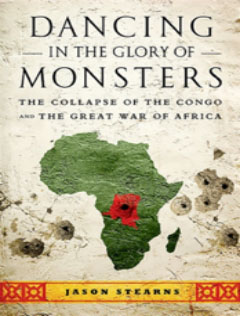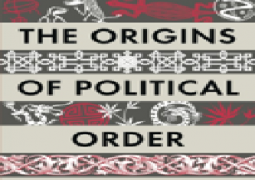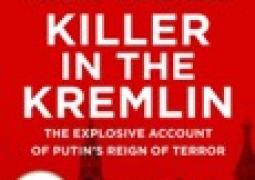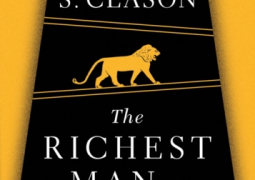
Removing war debris can be an expensive luxury in a poor country, and the wreck seemed an apt symbol of the indelible mark that 15 years of intermittent conflict has put on this nation.
The fighting has left tens or even hundreds of thousands of women gang-raped and led to what may be millions of war-¬related deaths; at its peak, some 3.4 million Congolese (the only one of these tolls we can be remotely sure of) were forced to flee their homes for months or years. But it draws little attention in the United States. As Jason K. Stearns, who has worked for the United Nations in Congo, points out, a study showed that in 2006 even this newspaper gave four times as much coverage to Darfur, although Congolese have died in far greater numbers.
One reason we shy away is the conflict’s stunning complexity. “How,” Stearns asks, “do you cover a war that involves at least 20 different rebel groups and the armies of nine countries, yet does not seem to have a clear cause or objective?” “Dancing in the Glory of Monsters” is the best account so far: more serious than several recent macho-war-correspondent travelogues, and more lucid and accessible than its nearest competitor, Gérard Prunier’s dense and overwhelming “Africa’s World War: Congo, the Rwandan Genocide, and the Making of a Continental Catastrophe.”
A fatal combination long primed this vast country for bloodshed. It is wildly rich in gold, diamonds, coltan, uranium, timber, tin and more. At the same time, after 32 years of being stripped bare by the American-backed dictator Mobutu Sese Seko, it became the largest territory on earth with essentially no functioning ¬government.
Then it was as if waves of gasoline were poured onto the tinder. When the Hutu regime that had just carried out the genocide of Rwanda’s Tutsis was overthrown in 1994, well over a million Hutu fled into eastern Congo, then known as Zaire. These included both the génocidaires and their defeated army (the abandoned armoured car in Bunia was theirs) as well as hundreds of thousands of Hutu who had not killed anyone but who feared reprisals at the hands of the Tutsis now running Rwanda.
In their militarized refugee camps, the génocidaires rearmed and began staging raids on Rwanda. To try to put a stop to this and install a friendly regime in the huge country next door, Rwanda, along with Congolese rebel allies, invaded its neighbour in 1996 in what is known as the “first war.” Mobutu’s kleptocracy in Kinshasa rapidly crumbled; the dictator fled overseas and died a few months later. Laurent Kabila, a portly veteran of some years as a rebel in the bush and many more as a shady businessman in exile, now found himself leader of a Congo where almost all public services had collapsed. He was not the man to fix them. Stearns gives a vivid anecdotal picture of Kabila as someone far out of his depth, trying to run a government by literally turning his house into the treasury, with thick wads of bills stashed in a toilet ¬cubicle.
Kabila soon parted ways with his Rwandan backers. Then came the “second war”: an invasion by Rwanda and its ally Uganda in 1998. They failed to overthrow Kabila, however, because, dangling political favours and lucrative business deals, he enlisted military help from several other countries, principally Angola and Zimbabwe. A few years later he was assassinated and succeeded by his son Joseph. Eventually, a series of shaky peace deals ended much of the fighting.
But, as Stearns says, “like layers of an onion, the Congo war contains wars within wars.” For example, Uganda and Rwanda fell out badly with each other and fought on Congo soil. Each country then backed rival sets of brutal Congolese warlords who sprang up in the country’s lawless, mineral-rich east. And when Rwanda’s Hutu-Tutsi conflict spilled over the border, it fatally inflamed complex, longstanding tensions between Congolese Tutsis and other ethnic groups. This is merely the beginning of the list.
The task facing anyone who tries to tell this whole story is formidable, but Stearns by and large rises to it. He has lived in the country, and has done a raft of interviews with people who witnessed what happened before he got there. Occasionally the chain of names of people and places temporarily swamps the reader, but on the whole his picture is clear, made painfully real by a series of close-up portraits.
In one crowded refugee camp there were no menstrual pads; women could use only rags that, repeatedly washed out, left rivulets between the tents streaked with blood, as if a reminder of the carnage they were fleeing. Or here is a Rwandan Army officer from a death squad that took revenge on Hutu refugees, including women and children, telling Stearns: “We could do over a hundred a day.... We used ropes. It was the fastest way and we didn’t spill blood. Two of us would place a guy on the ground, wrap a rope around his neck once, then pull hard.”
Congo’s history is interwoven with all of its neighbors, but none more closely than Rwanda, whose government in the 1990s understandably feared that Congo-based génocidaires could continue to rampage over the border and slaughter more Tutsi. But the genocide in no way excuses subsequent Rwandan massacres of tens of thousands of Hutu in Congo. Nor the way Rwanda quickly became the latest in the long string of outsiders — from Atlantic slave traders to Belgian colonizers to mining multinationals — who have so plundered this territory.
Stearns is somewhat easier on Rwanda here than he has been elsewhere, for example, in a United Nations report he contributed to. But he does quote the Rwandan strongman and current president Paul Kagame as calling his military intervention “self-sustaining,” and cites an estimate that the Rwandan Army and allied businesses reaped some $250 million in Congolese minerals profits at the height of the second war. Such figures are backed up in abundant detail in a series of United Nations reports, and ultimately led Sweden and the Netherlands to suspend aid to Rwanda.
Not so the United States. It has supported Kagame for years, contributing indirectly to Congo’s suffering. How this media-savvy autocrat has managed to convince so many American journalists, diplomats and political leaders that he is a great statesman is worth a book in itself.
No account of Congo can yet have a happy ending. Although Stearns dutifully makes some policy proposals — more carefully directed aid with conditions on it; more stringent regulation of “mining cowboys”; a mechanism for holding the worst perpetrators to account — he is wise enough to know how difficult it will be to halt 15 years of violence and pillage. Indeed, the price of recent peace deals has been the incorporation of a number of rapacious warlords and their troops into the ill--disciplined Congolese national army.
That wrecked armoured car by the roadside in Bunia? It’s still there. A friend sent me a cell phone photo the other day. Only now, like a trophy, it has been lifted up onto a concrete pedestal, which is painted with the name of a nearby army unit.




